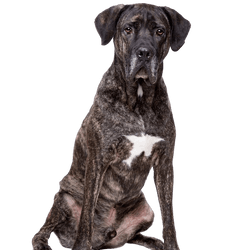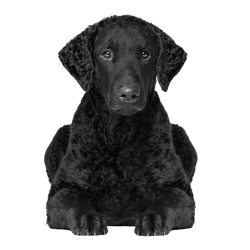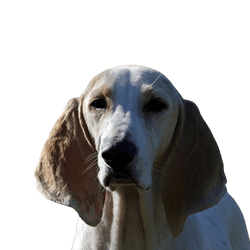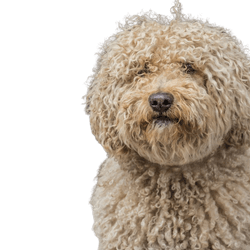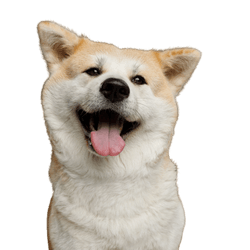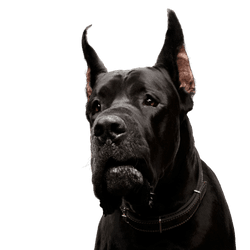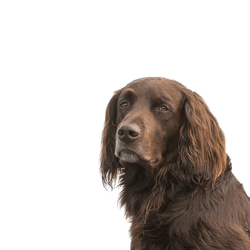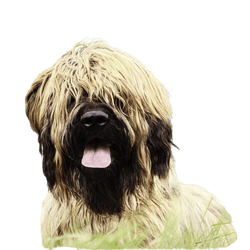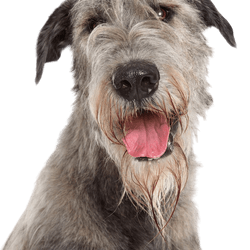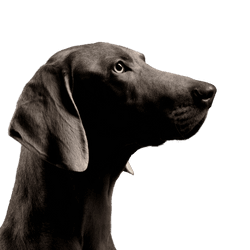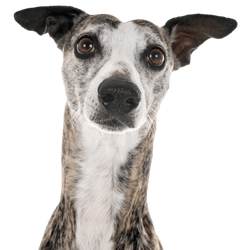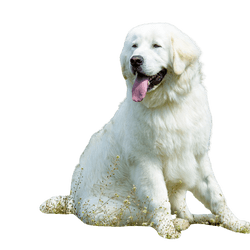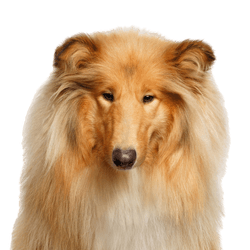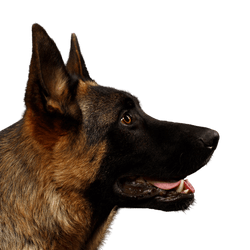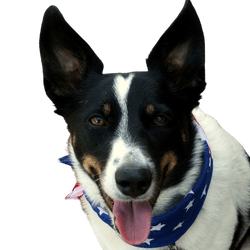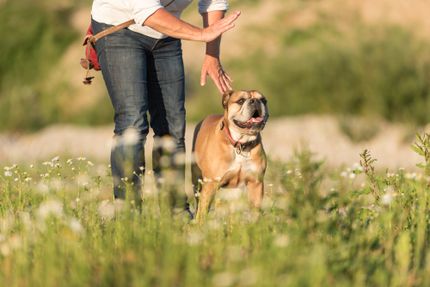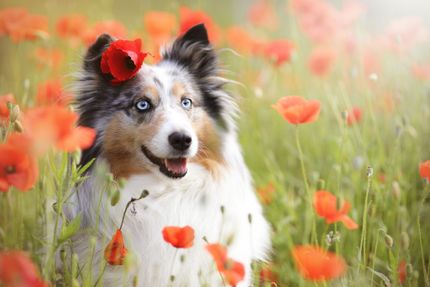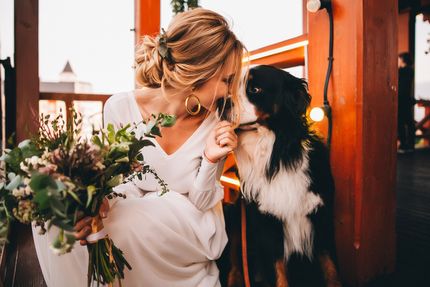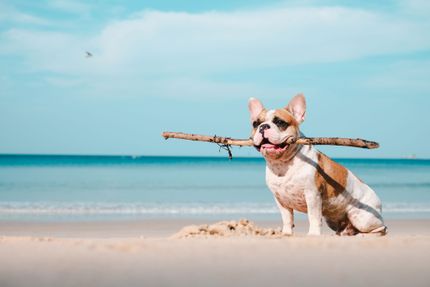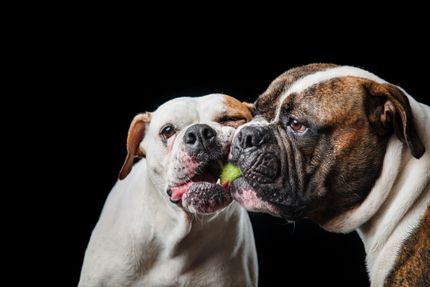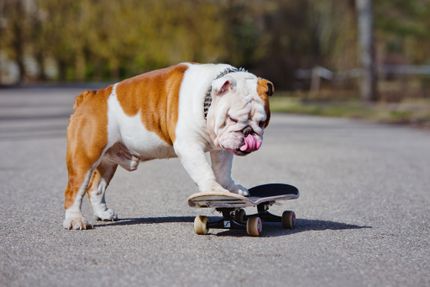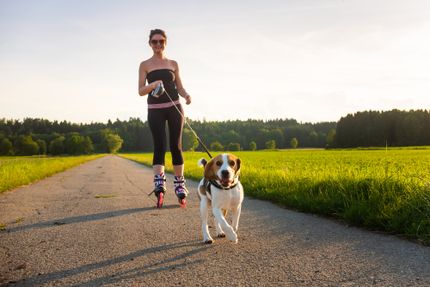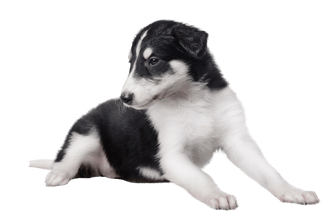
Borzoi Breed description: Character & Co
Borzoi
Facts & Origin
What is the origin of the Borzoi?
The Borzoi (Russian: Russkaja psowaya borsaya) originates in Russia and is one of the oldest dog breeds as well as one of the fastest animals on land in the world. It was first mentioned in the 11th century and was very popular with the Tsars and Grand Dukes, who kept up to 500 Borzois in luxurious kennels. The dogs were used in the 13th and 15th century for the coursing of foxes, hares, wolves and antelopes. Until 1850 there was no uniform type of Borzoi. Ten different sighthound types were selected for today's Borzoi breeding. In 2017, genetic analyses showed that it is related to the Irish Wolfhound and the Greyhound.
When Henry I married the daughter of the Kiev Grand Duke, three Borzois were brought to France. Until 1914, the Borzoi was considered the national dog of Russia, their theft was even punishable by law. During the Russian October Revolution, the Borzoi faced the risk of almost dying out. However, at the same time it gained popularity in Europe and America, which made it possible to save the dog breed. In the middle of the 19th century, English breeders began to adapt the Borzoi according to their ideas and at the end of the 19th century they finally arrived to Germany. In 1956, the Borzoi was recognised as a pedigree dog by the FCI.
The Borzoi is still used today for hunting silver foxes and sables. It kills its prey in a flash by breaking its neck, this way the prey's fur remains unharmed and can be wholesomely processed.
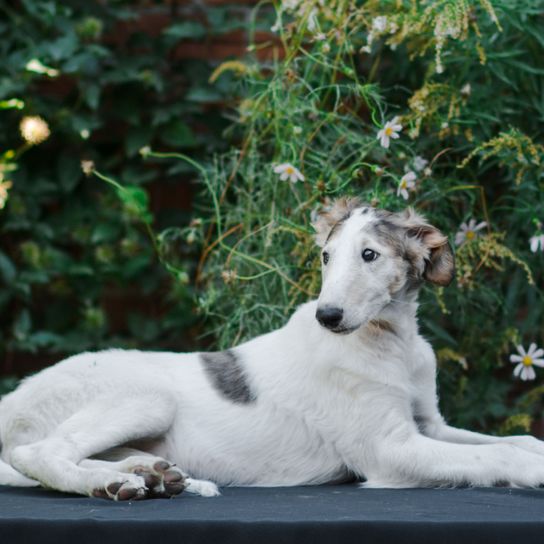
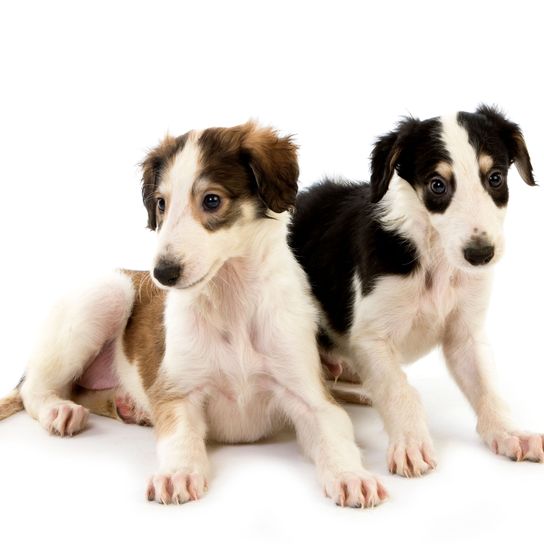
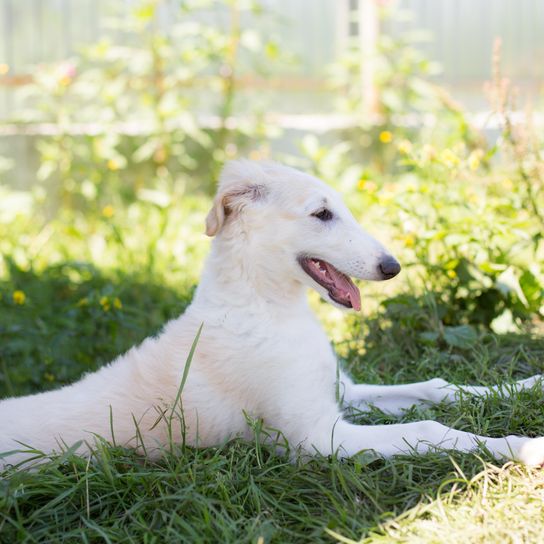
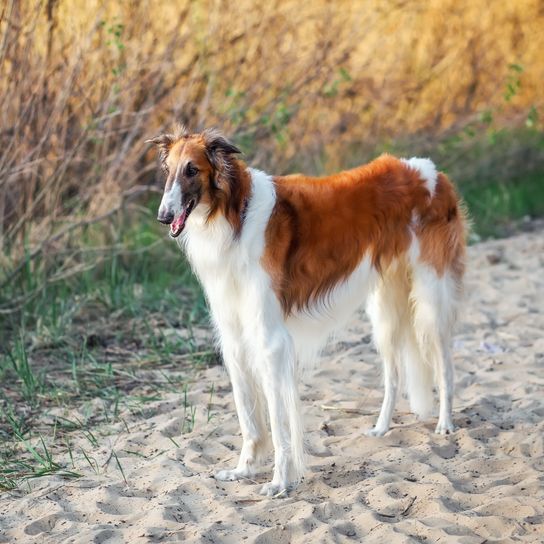
| Alternate Name | Russian Wolfhound |
| Origin | Russia |
| Life expectancy | 7 - 10 years |
| Care requirements | high-maintenance |
| Activity level | high |
| FCI group | Long-haired or fringed Sighthounds |
| AKC group | Hound Group |
| KC group | Hound Group |
Attitude, character and temperament of the breed
What are typical characteristics of the Borzoi?
The friendly and easily trainable Borzoi has two sides to its character: In the house, it usually behaves like a calm and gentle family member. Loyal and affectionate, it seeks the closeness of its owner. If it has been taught to do so, the Borzoi can also be left unattended for a few hours.
Outside, however, the Borzoi shows a highly pronounced hunting behaviour. It reacts very quickly when potential prey is closeby and will chases after them if not kept on a leash. However, with good training and a strong bond to its owner, it will return immediately when called back.
The Borzoi is easy to train, because with its friendly and self-confident nature it is not particularly rebellious. Training should start as early as possible in a relaxed and patient manner, but also with loving consistency. Towards other dogs or strangers the Borzoi is reserved and rather suspicious.
Character
Usage
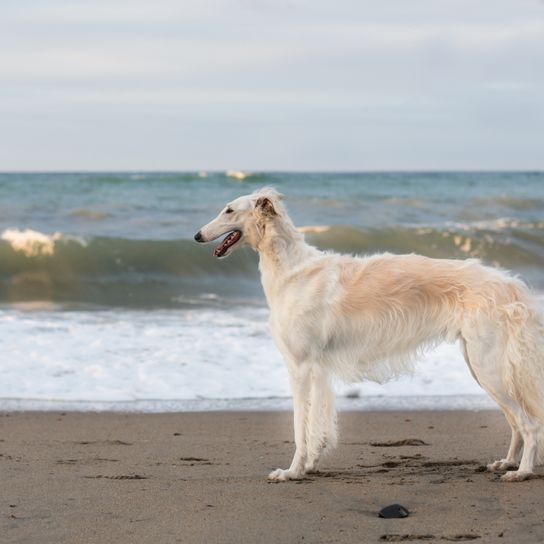
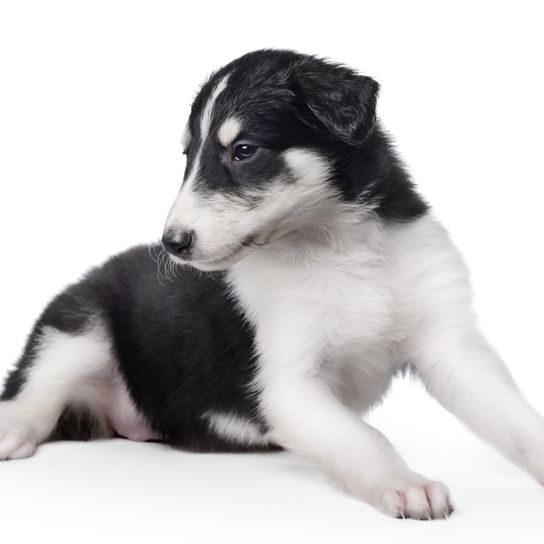
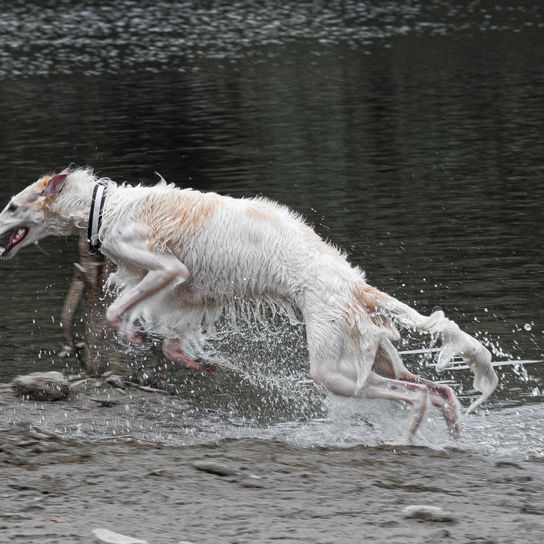
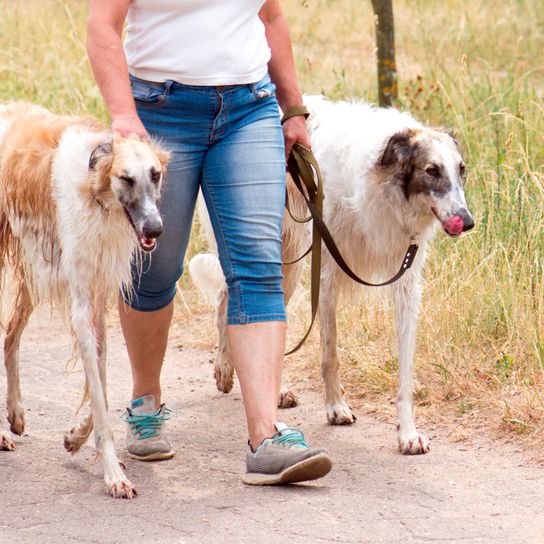

Health and breeding information
What are typical Borzoi diseases?
The Borzoi is a robust dog breed and no typical hereditary diseases are known. However, like all big dogs, it is prone to developing stomach torsions and tend to suffer from flatulence from time to time. Intensive breeding of the Borzoi can also increase the risk of hip and elbow dysplasia as well as eye and heart diseases.
What should be considered in regards to Borzoi breeding?
Since the Borzoi is not a widespread dog breed, Borzoi puppies should only be bought from a trustworthy breeder. On the VDH website there is a list of Borzoi breeders and clubs. In general, however, you should pay attention not only that the mother animal is healthy and makes a satisfied impression, but also that the kennel is clean and well maintained. Borzoi puppies should not only be vaccinated and dewormed, but also have a lively, open-minded and fearless spirit. While they are still with their mother, the socialisation of the puppy should already have started and the puppy should already be familiar with some basic rules. However, it does not necessarily have to know all commands.


What are the breed characteristics of the Borzoi?
The FCI has defined the following breed characteristics as breed specific for the Borzoi:
- Appearance: aristocratic with elegant and harmonious outlines and movements
- Head: very narrow and slender, oval skull, strong lower jaw with scissor or pincer bite, small thin and movable ears, black nose and lips
- Eyes: large, set obliquely, almond shaped, expressive, hazel or dark brown eye colour
- Neck: long, laterally flattened, muscular, slightly curved, thick coat
- Physique: quite narrow, broad, arched and muscular back, long and broad, slightly sloping croup, very deep, oval chest, withers not pronounced, long and sloping shoulder blade, long, muscular and well angulated legs
- Tail: low set sabre or sickle tail, long, thin and strongly feathered, hanging down freely
- Paws: narrow, elongated-oval arched, strong and long claws reaching to the ground
- Coat: silky soft and smooth coat, short or wavy curls, short coat on head, ears and limbs, close lying to the body and quite long
Borzoi's appearance and coat
The Borzoi impresses with its aristocratic and elegant overall appearance, with a slender physique, arched back, deep chest and tucked-up stomach. The neck has a typical ruff.
The silky soft and smooth coat can be short or curly. The coat colour can be uni-coloured or multi-coloured white, beige or cream. Apart from the forehand and hindquarters, flanks and ribs, the dense coat is short.
The Borzoi has a unique facial expression and can raise their eyebrows and muzzle slightly or look at you with its sparkling eyes. Some Borzois even know how to "laugh". They show some or all of their teeth show a "laugh" that goes across their whole face by presenting their complete set of teeth.
How big does the Borzoi get?
With a wrist height of 68 to 85 cm the Borzoi is considered a large dog breed. Bitches are usually smaller than males, which can reach a wrist height of up to 95 cm in some cases.
How much does the Borzoi weigh?
The Borzoi's weight lies between 35 and 48 kg.
What is the average age of the Borzoi?
With appropriate keeping and nutrition, the Borzoi can reach 7-10 years of age.
| Fur length | long |
| Fur | flat coated |
| Ear shape | Floppy Ear |
| Tail | fanned out |
| Anatomy | slim |
| Size ♀ | 66 - cm |
| Weight ♀ | 25 - 40 kg |
| Size ♂ | 75 - 85 cm |
| Weight ♂ | 34 - 47 kg |
| Suitable For | - |
Colors


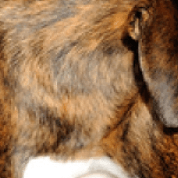
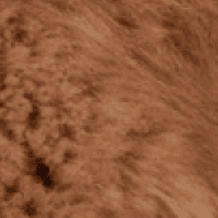

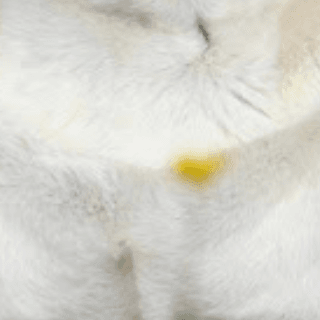


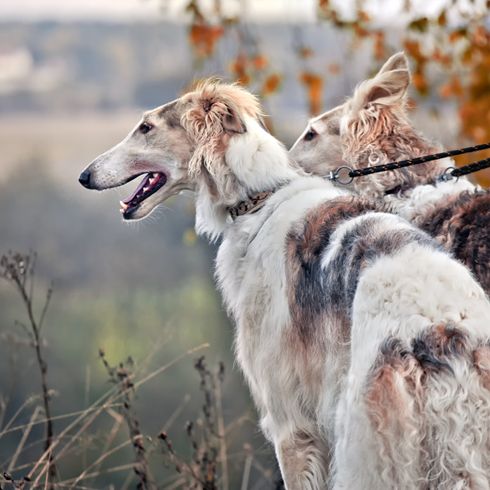
Known Diseases
Gastric torsion
Gastric torsion is a disease in which the stomach rotates around its own longitudinal axis. The cause of the disease is not known.
FAQ
-
Borzoi, is the name of a Russian greyhound with a long coat. Tasy, Chortaj or Taigan are the names of other Russian greyhounds.
-
The answer is difficult to give, because there are very few Borzoi breeders. However, one must count on a serious breeder with papers quickly times with 1500 euros.
-
Not as much as many believe. A Russian greyhound, borzoi, is satisfied with an average amount of exercise and then sleeps for several hours. A walk (3 times a day) can last about 30-60 minutes.
Other large dogs
Useful Articles
You can find articles that might interest you in the dogbible blog to match your favorite breed.
Visit our magazineto stay up to date on dog trends.
To find out more, view our Privacy Policy
Find here the breed that suits you and find out what character traits it has. Here you can also learn more about the origin, size and weight of your favorite breeds.
Matching your favorite breed, you'll find articles that might interest you on the dogbible dog blog.
First vaccinations for the puppy - Legal situation, What vaccinations are good and important
How to recognise good canned food for the dog
Raw Barf Food for beginners - everything you need to know about feeding dogs naturally
Holiday with dog Baltic Sea - these tips you should know in advance!
